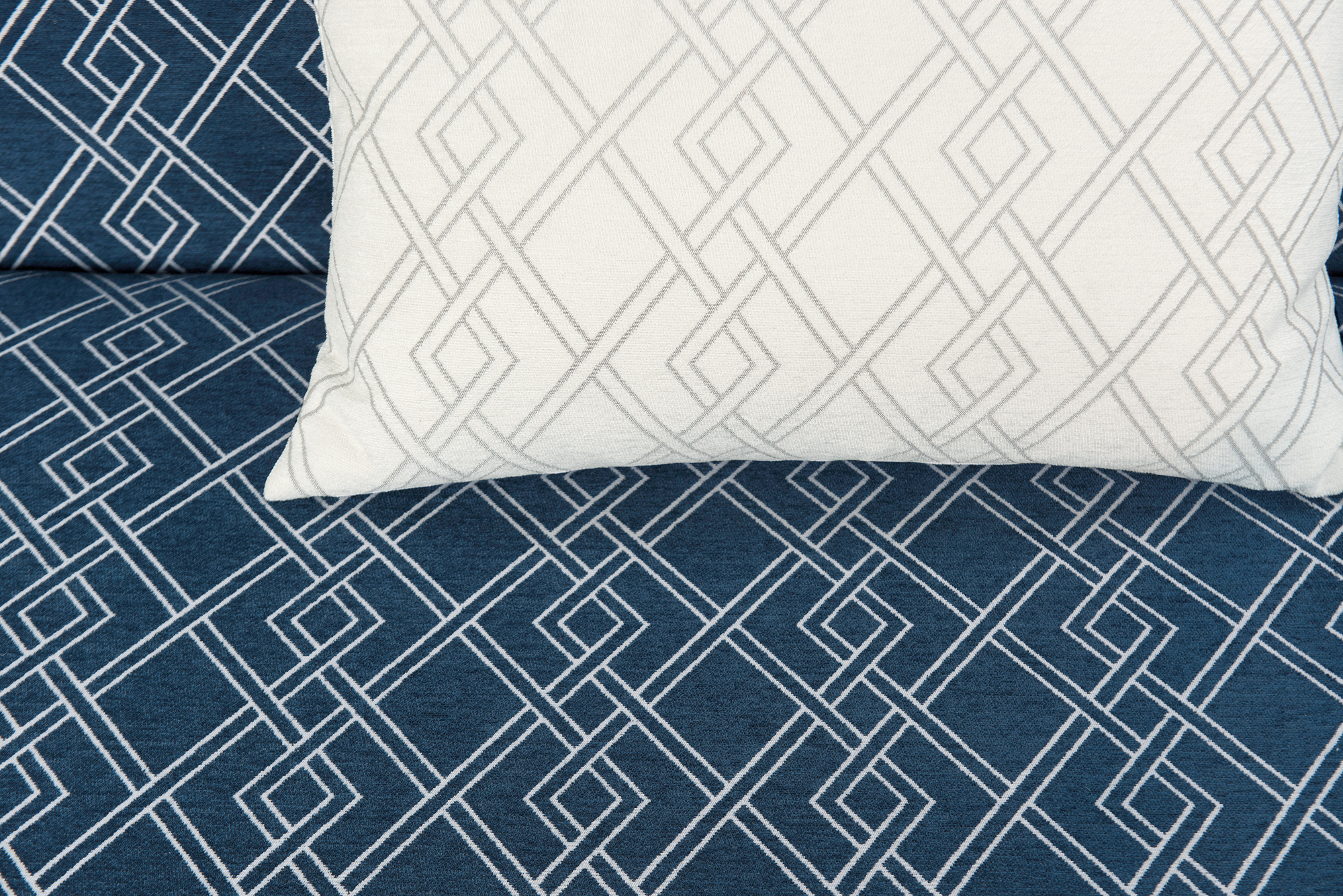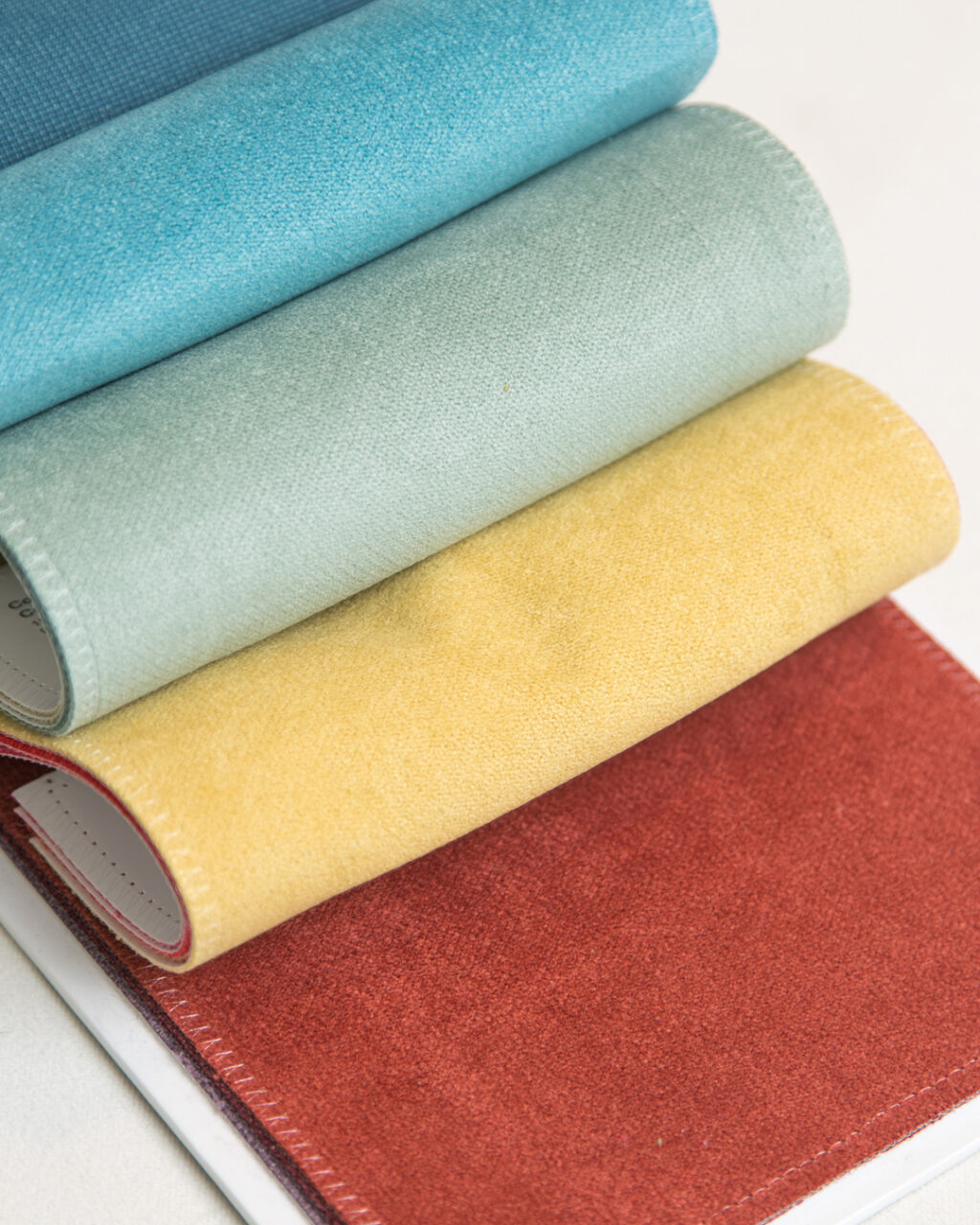PFAS-free fabrics: safer alternatives for furnishings
Introduction
Stain and water resistance in fabrics can be achieved without using toxic PFAS chemicals, which are harmful to health and the environment. PFAS-free options are becoming more popular as people become more aware of their benefits. Today on our Fabrics Academy blog, we take an in-depth look at:
- What are PFAS chemicals?
- Problems with PFAS chemicals
- Regulations restricting PFAS chemicals in consumer products
- Choosing PFAS-free fabrics
- How FibreGuard makes quality PFAS-free fabrics
Related read: Why FibreGuard upholstery fabrics are safe and non-toxic.

What are PFAS chemicals?
Per- and polyfluoroalkyl substances (PFAS) are a group of man-made chemicals that contain carbon-fluorine bonds. These chemicals provide stain, oil and water resistance, but also stay forever in the environment, and our bodies.
Thousands of PFAS substances are used in a variety of consumer and industrial products such as food packaging, household cleaners and stain repellents, non-stick cookware, waterproof fabrics and carpets.
People can be exposed to PFAS through ingestion of contaminated water and food, inhalation of particles, or skin contact with PFAS-treated materials. PFAS accumulate in the body over time and have been linked to health problems like thyroid disorders, decreased fertility, asthma and certain types of cancer.
PFAS contamination is widespread globally, with concerning levels detected in drinking water, soil, wildlife, and humans.
If you want to explore more about fabrics and other textiles, keep browsing through our online fabrics academy and textiles glossary.
Problems with PFAS chemicals
PFAS chemicals are highly problematic due to their persistence, bioaccumulation, and association with adverse health effects. Once released into the environment, PFAS do not break down and can persist indefinitely (EPA, 2023). This leads to bioaccumulation up the food chain, as PFAS accumulate in the bodies of organisms (NIEHS).
Lots of studies have linked PFAS exposure to health problems like thyroid disease, decreased fertility, developmental effects in children, and increased cholesterol (EPA, 2023).
Due to their complex chemistry, PFAS are extremely difficult to remove once released into the environment. Unless the use of PFAS is phased out, these chemicals will continue to build up and pose risks.
Related read: Material matters: the role of fabric selection in sustainable interior design

Regulations restricting PFAS chemicals in consumer products
Choosing PFAS-free products is an important step toward reducing overall PFAS contamination. The gigantic task isn’t entirely on the shoulders of consumers, though: there are several regulations in force or in progress across the globe to limit or ban the use and manufacture of PFAS chemicals.
Some of the major ones are:
- The Persistent Organic Pollutants (POPs) Regulation, which restricts the use of certain PFAS chemicals such as PFOS, PFOA, and PFHxS, which are considered to be very persistent and bioaccumulative.
- The REACH Regulation, which identifies some PFAS chemicals as Substances of Very High Concern (SVHC) and imposes authorisation or restriction requirements for their use. For example, a restriction proposal for the use of PFAS in firefighting foams is currently under evaluation.
- The EU PFAS Restriction Proposal, which was submitted by five European countries in February 2023 and aims to ban the use and manufacture of all PFAS chemicals as defined by the OECD, with some exceptions for essential uses or where no alternatives are available. This proposal is expected to be the most comprehensive and ambitious regulation of PFAS chemicals in the world.
- In the US, the Environmental Protection Agency (EPA) has issued a PFAS Action Plan, which outlines various steps to address PFAS contamination, such as setting drinking water standards, developing toxicity assessments, and enforcing cleanup measures.
- In Canada, the government has added PFOS, PFOA, and LC-PFCAs (long-chain perfluorocarboxylic acids) to the list of toxic substances under the Canadian Environmental Protection Act, and has implemented risk management measures to reduce their release and use.
- In Australia, the Department of Health has established health-based guidance values for PFOS and PFOA in drinking water and recreational water, and the Department of Environment and Energy has developed a National Environmental Management Plan for PFAS to provide a consistent approach for assessing and managing PFAS contamination.
Choosing PFAS-free fabrics
With growing awareness of the health and environmental risks posed by PFAS chemicals, many consumers are now seeking out PFAS-free options for fabrics in furniture, drapes, carpeting, and other textiles.
Consumers have a right to know about the presence of PFAS and to be able to make informed choices about the products they bring into their homes. Transparency and disclosure enable customers to essentially vote with their money in support of companies offering safer products.
Our focus at FibreGuard is to be what we call ‘life-friendly.’ This means creating fabrics that make life easier through performance, while also being safe for human health and the environment. Learn more.
How FibreGuard makes quality PFAS-free fabrics
We care about your health and well-being at FibreGuard. That's why we don't use any PFAS/PFCs, also called ‘forever chemicals’, in our upholstery and drapery fabrics. You can trust FibreGuard to provide you with fabrics that are safe and free of harmful chemicals.
Really? Let’s look at some third party certifications that ensure our PFAS-free claims are trustworthy.
- All FibreGuard fabrics are certified by OEKO-TEX Standard 100 to be free of harmful levels of over 300 substances, including PFAS.
- Fabrics with the STANDARD 100 by OEKO-TEX® certification are also tested for Volatile Organic Compound (VOC) emissions. If you’d like to do a deep dive on the updated 2023 criteria for this certification, check out this in-depth overview.
- Our performance fabrics also comply fully with the strict chemical regulations of the EU's REACH program.
Related read: Why eco-conscious furniture manufacturers use FibreGuard fabrics
Explore the world of textiles and performance upholstery with FibreGuard
We hope you’ve found this article helpful and that it’s cleared up any misconceptions about this complicated topic. If you want to explore more about fabrics and other textiles, keep browsing through our online fabrics academy and textiles glossary.
Find thorough information and guidance, helping you make informed decisions about your upholstery projects and interior design projects. Happy reading!
